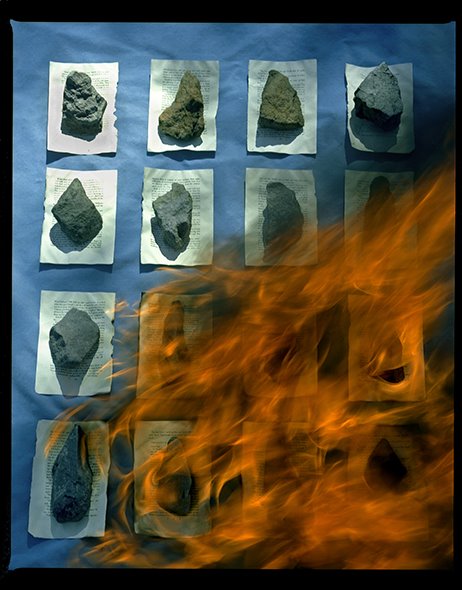When I saw the dome of the Al-Aqsa mosque, I raised my camera. Using a wide-angle lens, I quickly made three photographs of sections of a corner of the ancient city wall; the mosque's dome was visible in the distance along the edge of the frame. Lowering the camera, I turned and retraced my steps, eager to get under some shade, and shelter from the sunlight. I gradually made my way back to more familiar surroundings. It was a long, slow walk on a dry and dusty day.
A few weeks later I returned to these three separate, detail images. I decided to stitch them together to form a single photograph, a vertical panorama, of this particular view of the wall. This single component, this new panorama, is the "building block" from which the rest of the image was constructed. After a few duplications and rotations, reversals and pairings, this composite image emerged.
This image reminds me of 19th century photographs by the likes of Maxime Du Camp or Gustave Le Gray, and the drawings of Piranesi. This is, certainly, a photograph made in Jerusalem; but it is also a representation of an Imaginary Jerusalem. In this regard it follows in the great tradition of artists and pilgrims alike projecting preconceptions on the surface of this great city. The Temple Mount figures significantly in the endtime scenarios embraced by Abrahamic faiths, and this photograph resonates with those religions' scenarios of The End of the World, which are predicted to occur within this very cityscape.












135-.jpg)


+copy.jpg)


No comments:
Post a Comment